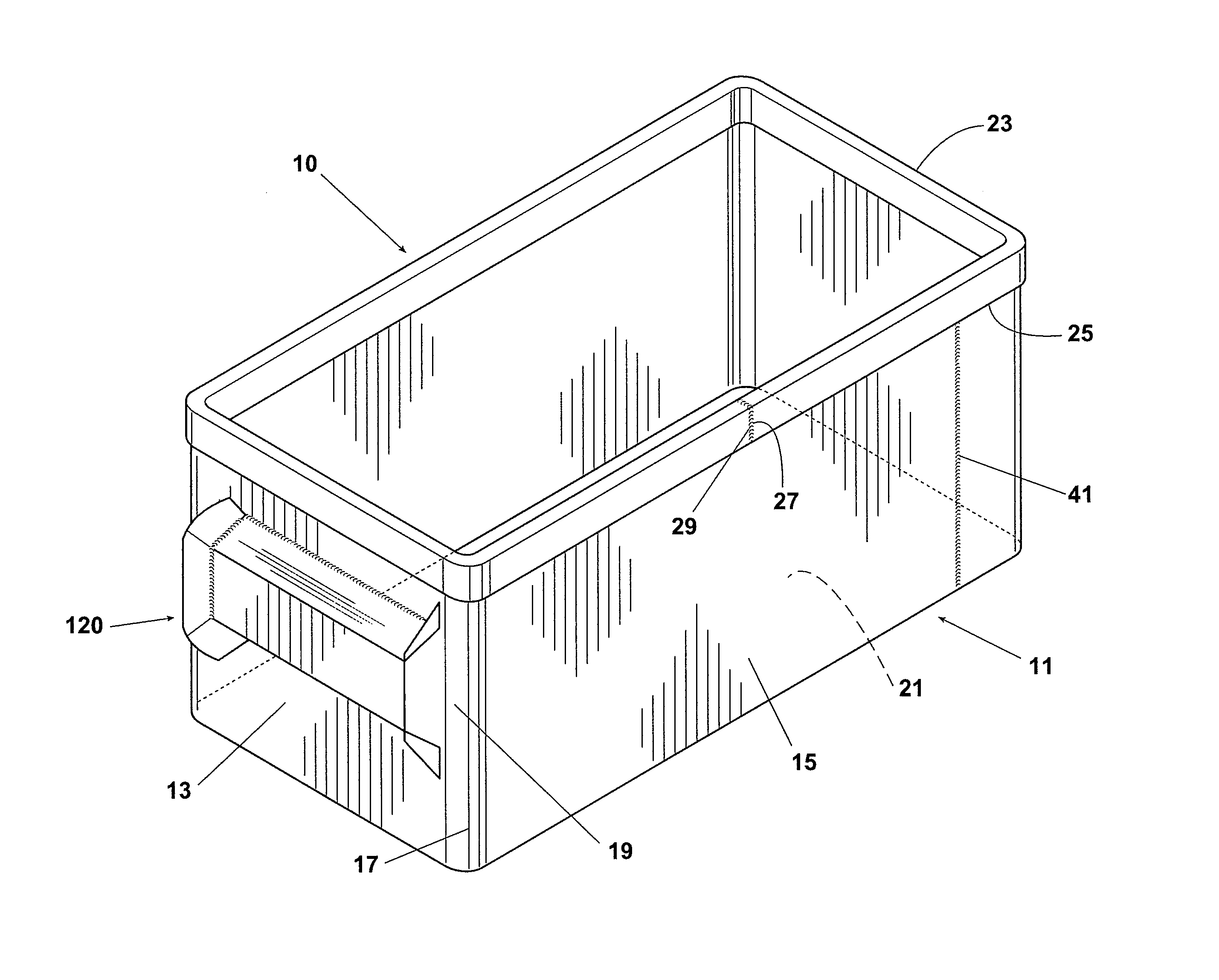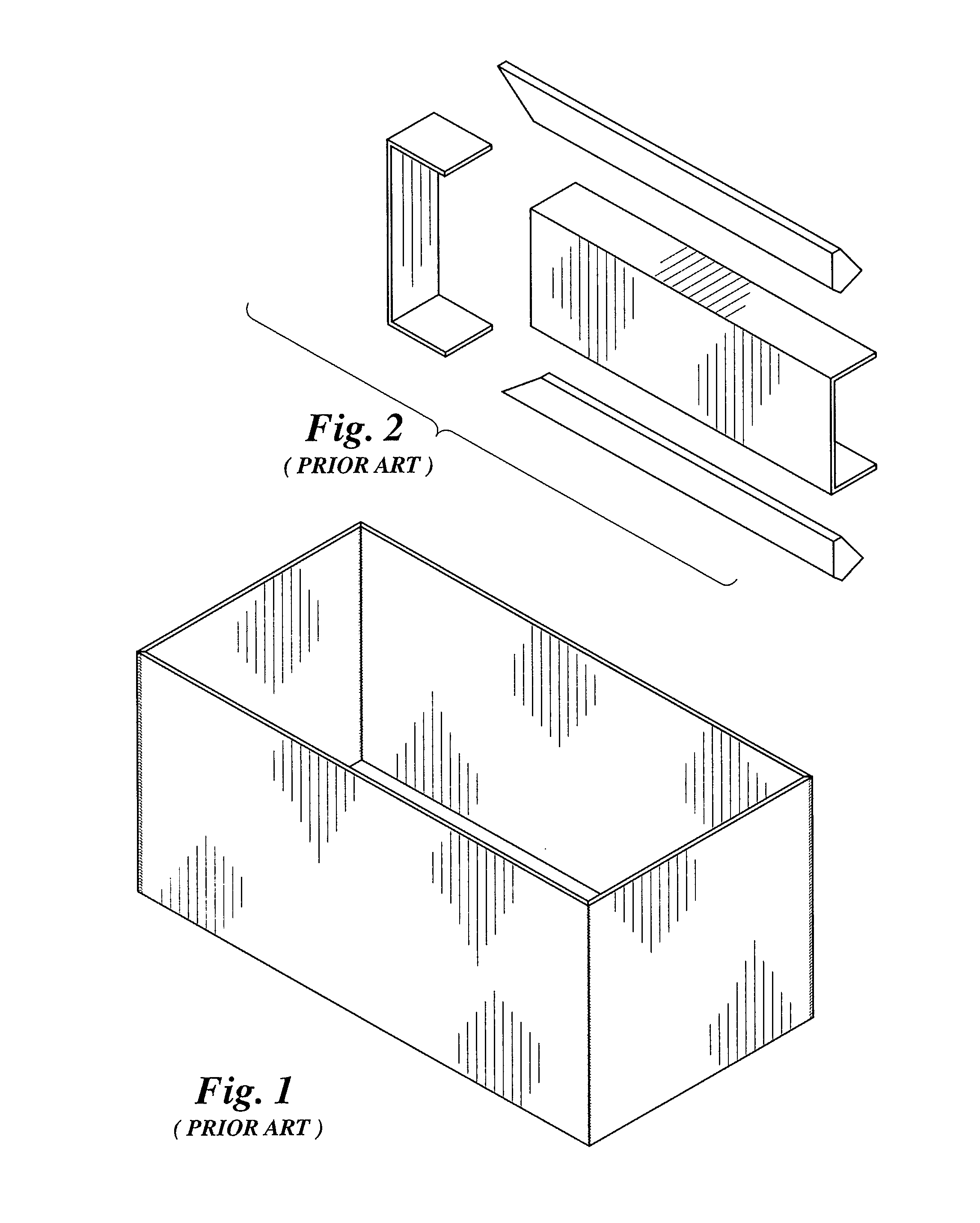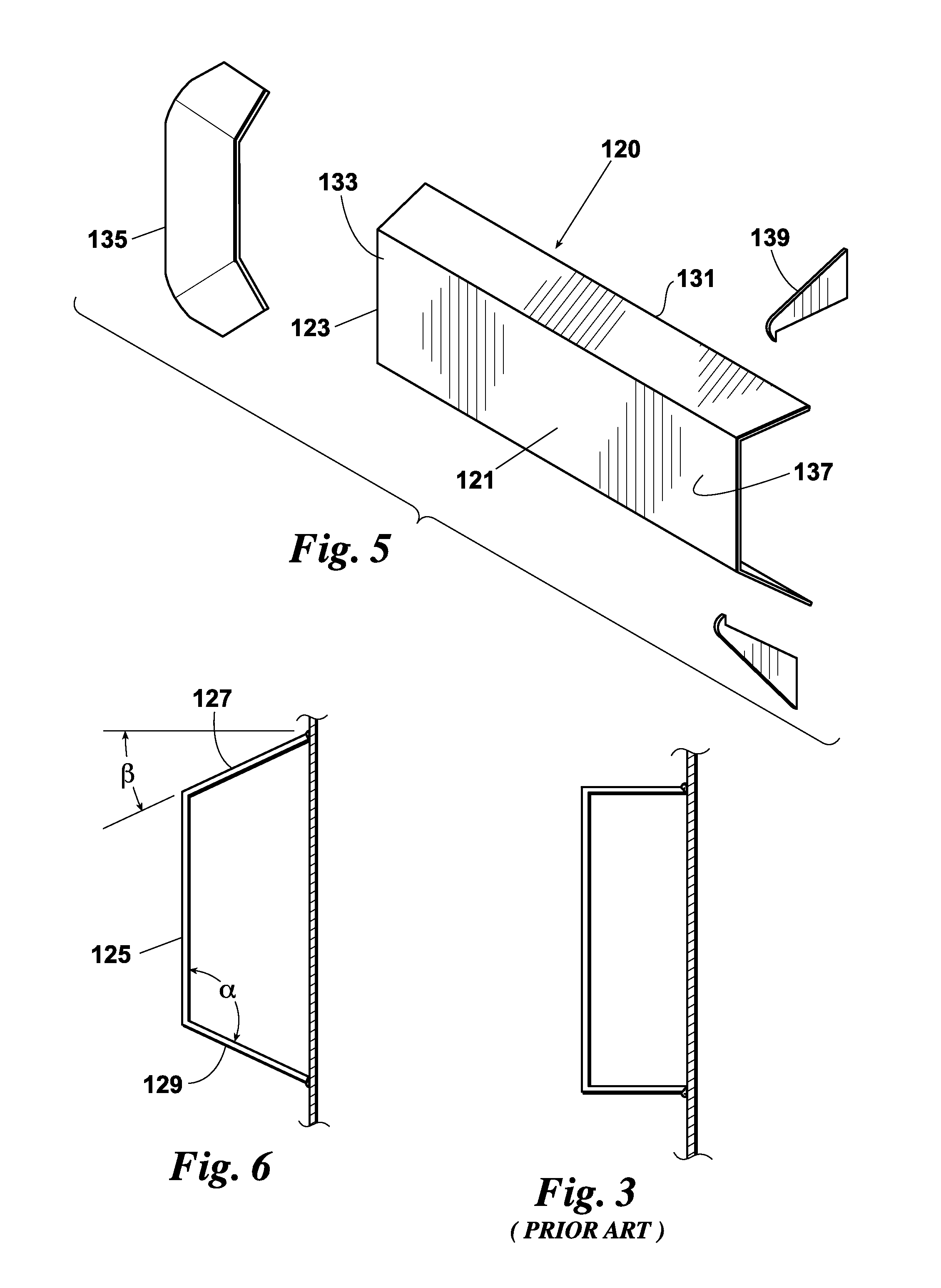Front load refuse container and lift pocket assembly
a front load, refuse container technology, applied in the field of refuse hauling, can solve the problems of potential safety hazards, high cost and time consumption of containers, and significant amount of cutting and welding during fabrication of front load refuse containers, so as to improve the aesthetics of containers and reduce the number of visible weld seams.
- Summary
- Abstract
- Description
- Claims
- Application Information
AI Technical Summary
Benefits of technology
Problems solved by technology
Method used
Image
Examples
Embodiment Construction
[0041]Referring to the drawings, and first to FIG. 4, a front load refuse container 10 made according to this invention has a container body 11 made up of two opposing end walls 13 and two opposing side walls 15 that, instead of being four individually cut-to-size and welded pieces (see FIG. 1), are integrally formed from a single steel sheet 30. Single sheet 30 is of a type and gauge typically used in fabricating refuse containers and is preferably cut to a desired dimension using a plasma cutter. The height and length of the cut sheet 30 is such that, once fabricated into container body 11, the container body 11 provides the volume or refuse capacity desired for container 10 (e.g. 2 cubic yards, 10 cubic yards).
[0042]Because sheet 30 can be cut-to-size within a 1 / 16 to 1 / 32-inch tolerance, using a single sheet 30 to form container body 11 significantly reduces the overall tolerance relative to that experienced with prior art container bodies, with their four individually cut-to-si...
PUM
 Login to View More
Login to View More Abstract
Description
Claims
Application Information
 Login to View More
Login to View More - R&D
- Intellectual Property
- Life Sciences
- Materials
- Tech Scout
- Unparalleled Data Quality
- Higher Quality Content
- 60% Fewer Hallucinations
Browse by: Latest US Patents, China's latest patents, Technical Efficacy Thesaurus, Application Domain, Technology Topic, Popular Technical Reports.
© 2025 PatSnap. All rights reserved.Legal|Privacy policy|Modern Slavery Act Transparency Statement|Sitemap|About US| Contact US: help@patsnap.com



